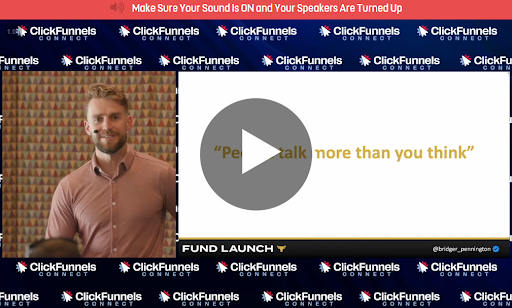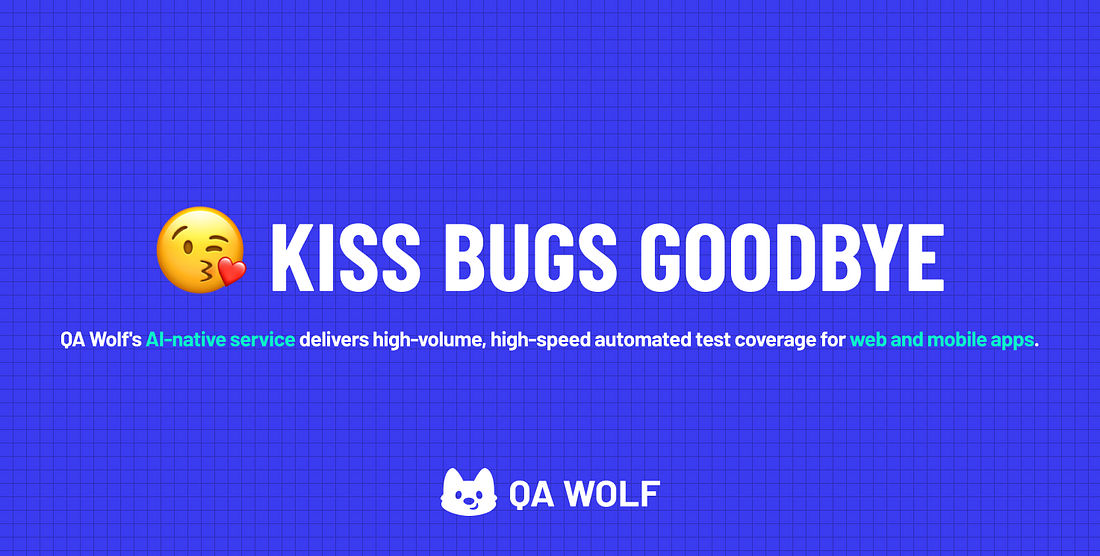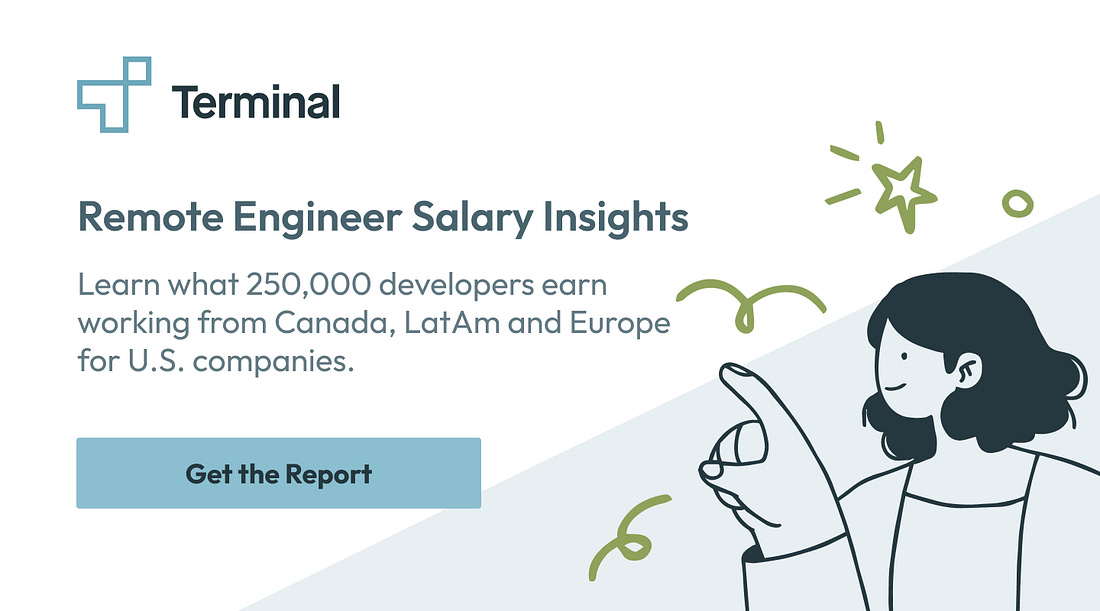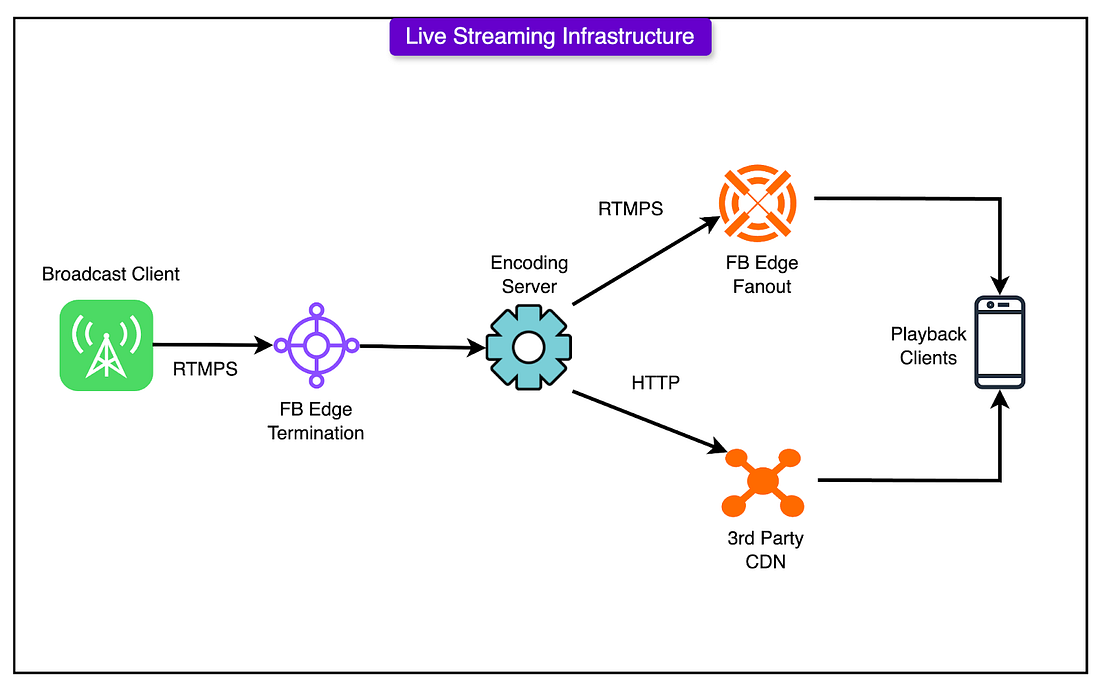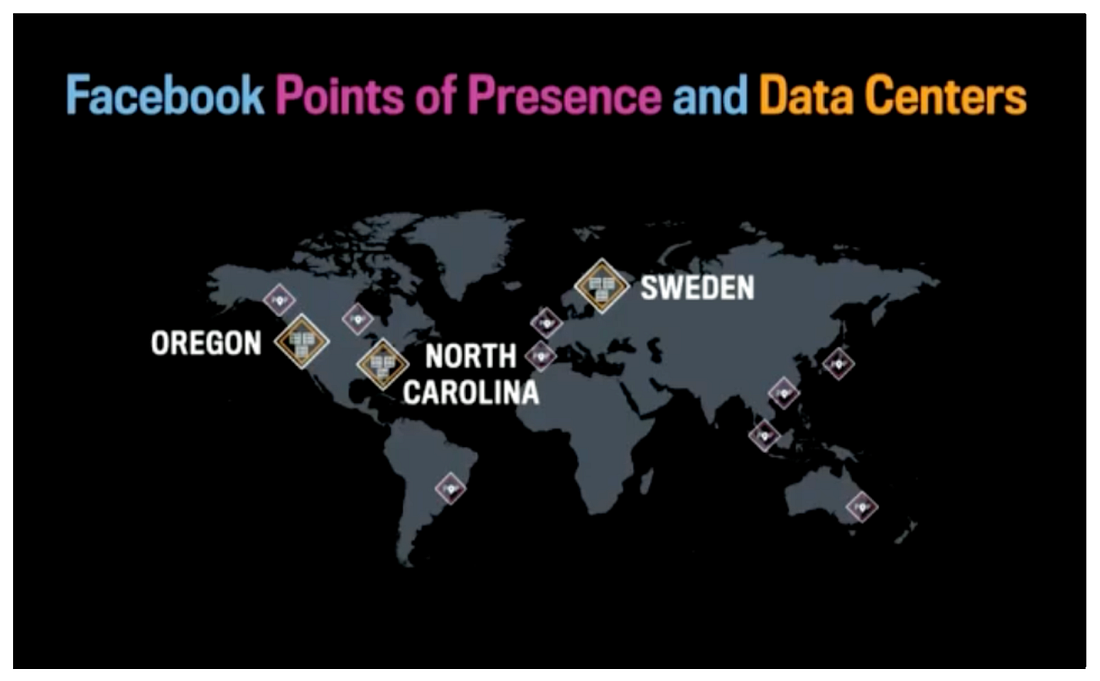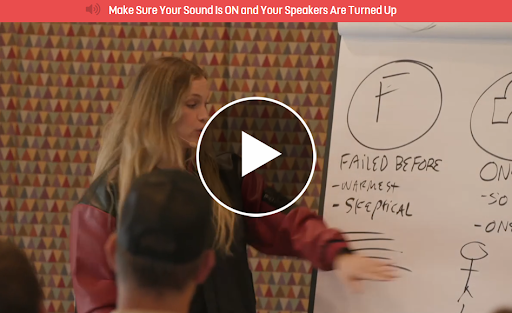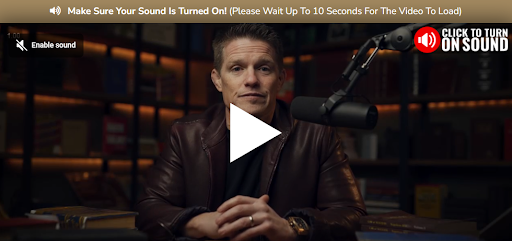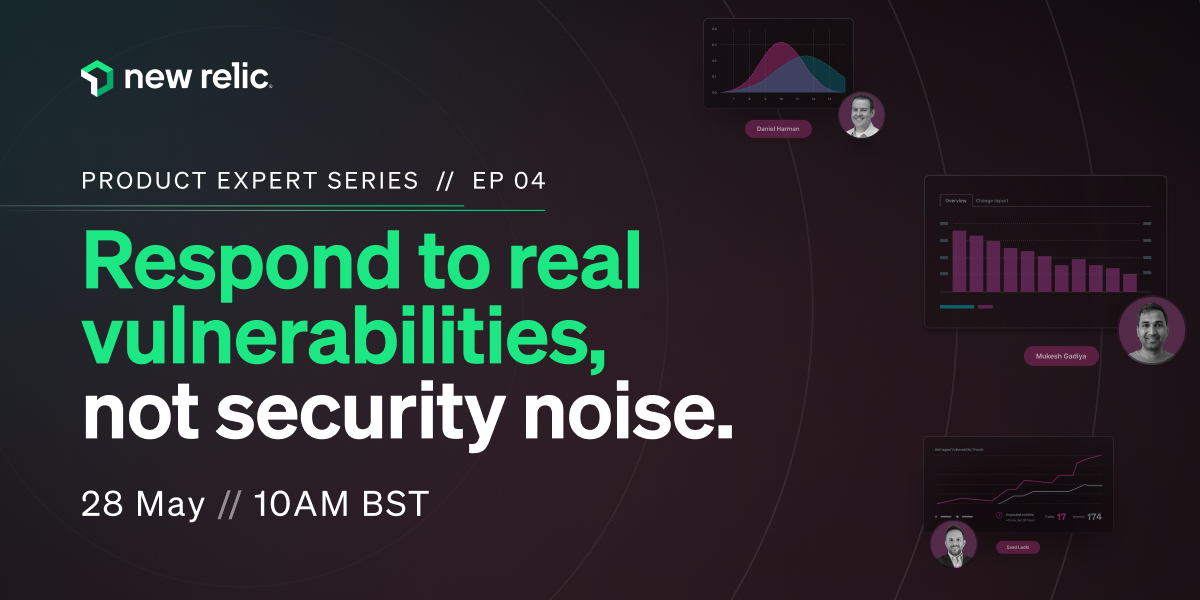Archives
- By thread 5237
-
By date
- June 2021 10
- July 2021 6
- August 2021 20
- September 2021 21
- October 2021 48
- November 2021 40
- December 2021 23
- January 2022 46
- February 2022 80
- March 2022 109
- April 2022 100
- May 2022 97
- June 2022 105
- July 2022 82
- August 2022 95
- September 2022 103
- October 2022 117
- November 2022 115
- December 2022 102
- January 2023 88
- February 2023 90
- March 2023 116
- April 2023 97
- May 2023 159
- June 2023 145
- July 2023 120
- August 2023 90
- September 2023 102
- October 2023 106
- November 2023 100
- December 2023 74
- January 2024 75
- February 2024 75
- March 2024 78
- April 2024 74
- May 2024 108
- June 2024 98
- July 2024 116
- August 2024 134
- September 2024 130
- October 2024 141
- November 2024 171
- December 2024 115
- January 2025 216
- February 2025 140
- March 2025 220
- April 2025 233
- May 2025 239
- June 2025 303
- July 2025 49
-
How companies can turn their growth ambitions into action
Intersection
Get your briefing Most leaders believe they have the mindset for growth, but few take the necessary steps to actively pursue it. To learn more about how companies can unleash their full potential to drive growth, check out the latest edition of the Five Fifty.
We are celebrating the 60th birthday of McKinsey Quarterly with a yearlong campaign featuring four issues on major themes related to the future of business and society, as well as related interactives, collections from the magazine’s archives, and more. Our third issue, on the future of growth, is available now. Also, sign up for the McKinsey Quarterly alert list to be notified as soon as new Quarterly content is published.
Share these insights
Did you enjoy this newsletter? Forward it to colleagues and friends so they can subscribe too. Was this issue forwarded to you? Sign up for it and sample our 40+ other free email subscriptions here.
This email contains information about McKinsey’s research, insights, services, or events. By opening our emails or clicking on links, you agree to our use of cookies and web tracking technology. For more information on how we use and protect your information, please review our privacy policy.
You received this email because you subscribed to our McKinsey Quarterly Five Fifty alert list.
Copyright © 2025 | McKinsey & Company, 3 World Trade Center, 175 Greenwich Street, New York, NY 10007
by "McKinsey Quarterly Five Fifty" <publishing@email.mckinsey.com> - 04:44 - 21 May 2025 -
Free Sample Offer: GMP Semaglutide/Tirzepatide (1g Trial)
Dear Info ,
We’re offering complimentary 1g samples of our:
• Semaglutide (99% purity, HPLC-verified)
• Tirzepatide (98.5%+ purity, lyophilized powder)
Bonus:Receive a comparative cost analysis report with your sample.
Interested? Reply with your shipping address and target application.
Best regards,
Laura-lu
Jiangsu Horwats Biopharmaceutical CO., LTD.
https://horwats.com/
by "Laura-lu" <Laura-lu@horwatss.com> - 02:39 - 21 May 2025 -
Your corporate culture can’t be an accident
Re:think
Organizational health matters FRESH TAKES ON BIG IDEAS
PEOPLE AND ORGANIZATIONAL PERFORMANCE
Building a culture—on purpose
Alex CampOften when I’m speaking with Fortune 500 leaders—regardless of industry, type of business, size, or location—the conversation turns to culture. When I push a bit, “culture” is typically articulated as an amalgamation of things. It’s the result of M&A, previous leaders with strong perspectives and styles, enduring employee values and norms, or even just regional character.
Ultimately, the message I get is, “Our culture comes from a bunch of things, and this is where we ended up today,” rather than, “This is the culture that we need so that we can perform the most effectively, and we’ve made clear choices about what to do and not to do so that we can sustain it.” That’s the thing about building and maintaining an organization’s culture: If leaders aren’t intentional about it, they’re probably doing it wrong.
At McKinsey, we define “culture” as the behaviors, beliefs, and working norms that enable a company to deliver the value that it’s distinctively suited to deliver. Traditionally, leaders have been able to rely mostly on the informal transfer of culture among employees—many of whom were, in the past, probably working in the same place doing similar tasks, all with the same objectives. These days, however, changes in the ways that people work, the technologies that they use, and the world in which they compete have made this kind of organic approach to culture transfer less effective.
The first step toward building a company’s culture intentionally is to pay more attention to organizational health. By “organizational health,” we mean the foundational and measurable practices and behaviors that allow companies to manage through turns and navigate the world as it exists, regardless of shifts in the business, technology, or society. We’ve identified three dimensions of high performance that are most closely associated with organizational health: a sense of alignment, the ability to execute effectively, and recognition of the need for renewal and adaptation.
Leaders who routinely monitor how they’re faring along these dimensions will have the data and drive to mindfully build and sustain healthy cultures over time. The result can be more-engaged, more-productive employees. In addition, the research demonstrates that healthy organizations are more likely than peer companies to show improvements in CAGR, EBITDA, and M&A performance.“Culture can be a true competitive advantage when it’s intentional—and a significant drag on performance when it’s not.”
The second step is for leaders to be clearer about what they want from their culture—and what they don’t want. This latter point is critical and frequently overlooked. Leaders often say that they want a culture of accountability, inclusivity, or connectivity, but then they focus on the outcomes rather than the behaviors required to achieve those states. They’ve framed up the results but not the culture itself.
Instead, the focus should be on the trade-offs associated with establishing and maintaining a strong culture. Leaders should make deliberate choices about how to spend the organization’s time, energy, and resources. How exactly does the culture allow them to deliver on their distinct value proposition? Where might they be willing to accept inefficiencies in how they run the place to achieve and maintain the culture? What are the specific behaviors that would tell them that the organization is living its culture? With this level of understanding, leaders will be more likely to notice when people and processes get diverted. They’ll be better able to correct course and stop any behaviors that aren’t in line with the culture.
This process will look different for every company. Healthy cultures may look quite different at a big retailer, a not-for-profit, a healthcare organization, and a financial institution. Each will have its own methods for motivation, norms for convening meetings and making critical business decisions, and paths for employee development and promotion.
Take two different types of big retailers, for example. They may both stock the same brand of shampoo, but one may emphasize high-volume and low-cost plays and the other the customer-shopping experience. Shoppers find their shampoo at the first retailer, usually at a good price. The second retailer may be out of that shampoo but offer lots of other brands, so customers might be prompted to try something new. In both cases, leaders in those stores have built up their cultures to reflect different value propositions. The behaviors and metrics that they prioritize—who they hire, who they train, how they train, how they set up work schedules, and what matters for leaders—are aimed at delivering the value that only their organizations can.
Without such intentionality, leaders run the risk of losing or degrading elements of their culture—the secret sauce that differentiates them from competitors—every time there is some kind of internal or external shock to the system. The key question in all this for leaders is, “What really matters?” Because culture can be a true competitive advantage when it’s intentional—and a significant drag on performance when it’s not.ABOUT THIS AUTHOR
Alex Camp is a partner in McKinsey’s Boston office.
MORE FROM THIS AUTHOR
UP NEXT
Hannah Mayer on consumer innovation
Established retail and consumer-packaged-goods brands can be AI first movers. But true digital transformation requires prioritizing customers’ needs.
This email contains information about McKinsey’s research, insights, services, or events. By opening our emails or clicking on links, you agree to our use of cookies and web tracking technology. For more information on how we use and protect your information, please review our privacy policy.
You received this email because you subscribed to our McKinsey Quarterly alert list.
Copyright © 2025 | McKinsey & Company, 3 World Trade Center, 175 Greenwich Street, New York, NY 10007
by "McKinsey Quarterly" <publishing@email.mckinsey.com> - 01:45 - 21 May 2025 -
New 1.2 ml syringe with luer lock cap- Amedcon Healthcare
Dear Info,
I hope this email finds you well.
We have one kind of new syringe which I would like to recommend to you which we found may be similar to the syringe that you are currently using, please see the information below:
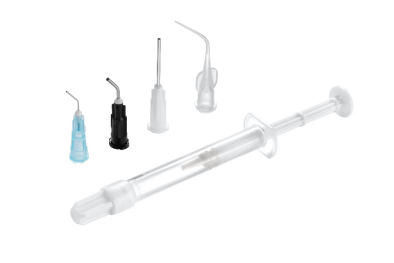
• Made of high-quality medical-grade PP material
• Support multi-color precision printing on the barrel
• Extremely tight sealing passed multiple sealing tests
• Provide Certificate of Analysis and Certificate of Conformance
• All products are produced in our factory so that quality is guaranteed
If you have an OEM project in mind, we can make your ideas and designs come true. Please contact us without hesitation if you are interested !
Best regards,
Amedcon Healthcare Manufacturing
Website: https://www.amedcon.com/
by "sales08" <sales08@amedcon.co> - 01:22 - 21 May 2025 -
Bridger’s personal brand playbook was 🔥
He revealed everything in the REPLAY!If you’ve been meaning to catch the ClickFunnels Connect Replay…
Here’s your midweek nudge to go watch it!
Because… IN ADDITION TO RUSSELL’S HUGE ANNOUNCEMENT… Bridger Pennington dropped one of the most actionable branding playbooks I’ve seen in a long time!
WATCH BRIDGER’S PERSONAL BRAND BLUEPRINT ON THE REPLAY HERE >>
He broke down exactly how he’s built a powerful personal brand - both online and offline - and it was sooooooooo good!!
It was strategic. It was honest. And it’s something you can apply right now!
And of course… don’t forget:
➡️ Russell made a big announcement at the event… and if you haven’t heard it yet, you need to!
HERE RUSSELL’S ANNOUNCEMENT + BRIDGER’S BRAND STRATEGY HERE >>
The replay is free! But only until Friday at 11:59PM.
Don’t miss it!
© Etison LLC
By reading this, you agree to all of the following: You understand this to be an expression of opinions and not professional advice. You are solely responsible for the use of any content and hold Etison LLC and all members and affiliates harmless in any event or claim.
If you purchase anything through a link in this email, you should assume that we have an affiliate relationship with the company providing the product or service that you purchase, and that we will be paid in some way. We recommend that you do your own independent research before purchasing anything.
Copyright © 2018+ Etison LLC. All Rights Reserved.
To make sure you keep getting these emails, please add us to your address book or whitelist us. If you don't want to receive any other emails, click on the unsubscribe link below.
Etison LLC
3443 W Bavaria St
Eagle, ID 83616
United States
by "Todd Dickerson" <noreply@clickfunnelsnotifications.com> - 12:00 - 21 May 2025 -
Architectural Metal Craft Solutions | 48-Hour Prototyping Available
Dear Info,
HuaiAn Future Trade delivers precision-engineered metal components for global construction engineering teams:
√ Perforated screens with 0.5mm tolerance control
√ Heavy-duty cable ladder systems (EN 61537 compliant)
√ Custom laser-cut decorative elementsKey advantages for your projects:
• 15-day lead time for bulk orders
• DFMA consultation services
• On-site installation guidanceAttached: CAD file templates for common HVAC/electrical applications.
Ready to streamline your material procurement?
Best regards,
Gloria Hu ¦ Sales Manager
P: +86 15950905466
E: gloria@cnfuturetrades.com
by "Klimczyk Rasely" <raselyklimczyk@gmail.com> - 06:44 - 21 May 2025 -
Don’t Miss Out - Only 3 Spots Left
This exclusive opportunity won’t last long... Hi Sir/Madam,
The response to our partnership opportunity at Poulton Park Golf Club has been overwhelming!
We now have just three slots remaining. If you secure one of these spots now, you’ll benefit from a reduced rate of £225/month.Here’s what you’ll get:
- Prominent branding across the club’s digital platforms, including large screens and mobile apps.
- Invitations to networking events designed to grow your business.
- Free golf at Poulton Park Golf Club and access to over 600 UK courses, including Close House and Macdonald Hotels.
This exclusive opportunity won’t last long. Contact me today to secure your place!
Best regards,
James Thomson
Account Manager
+44 (0)7453 145 120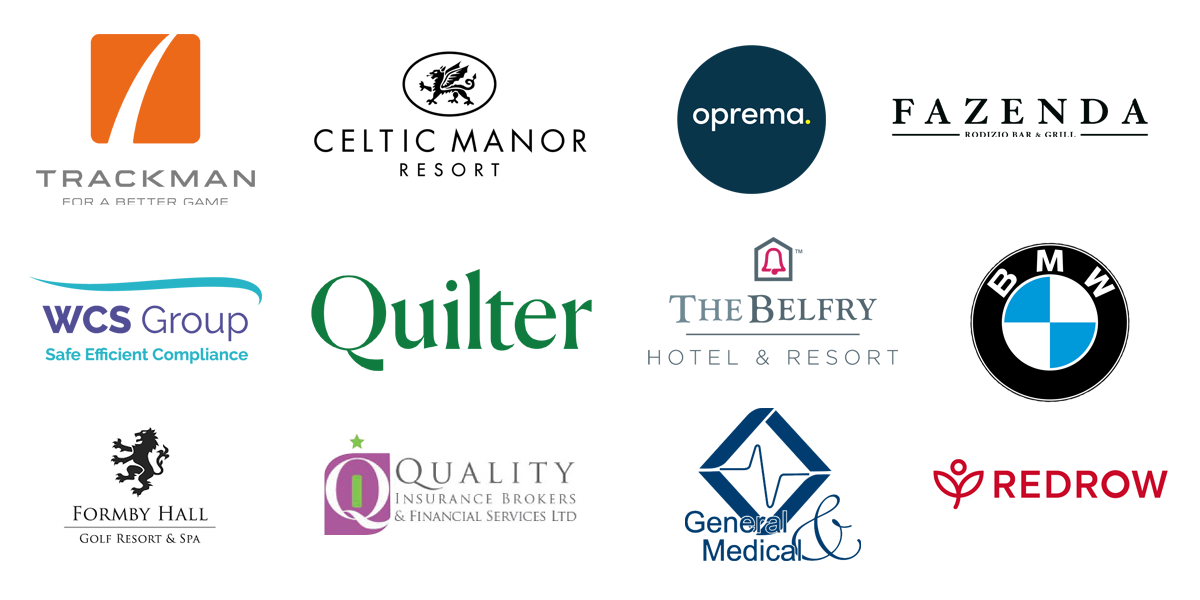

by "James Thomson - Golf Marketing Agency" <info@golfmarketingagency.co.uk> - 03:30 - 21 May 2025 -
The changing face of wealth: A multi-trillion-dollar opportunity
On McKinsey Perspectives
6 types of female investors Brought to you by Alex Panas, global leader of industries, & Axel Karlsson, global leader of functional practices and growth platforms
Welcome to the latest edition of Only McKinsey Perspectives. We hope you find our insights useful. Let us know what you think at Alex_Panas@McKinsey.com and Axel_Karlsson@McKinsey.com.
—Alex and Axel
—Edited by Belinda Yu, editor, Atlanta
This email contains information about McKinsey's research, insights, services, or events. By opening our emails or clicking on links, you agree to our use of cookies and web tracking technology. For more information on how we use and protect your information, please review our privacy policy.
You received this email because you subscribed to the Only McKinsey Perspectives newsletter, formerly known as Only McKinsey.
Copyright © 2025 | McKinsey & Company, 3 World Trade Center, 175 Greenwich Street, New York, NY 10007
by "Only McKinsey Perspectives" <publishing@email.mckinsey.com> - 11:06 - 20 May 2025 -
Discover extraordinary ceiling fans: Cooperation with Zhongshan Chunkai Electric
Dear Info,Greetings! I'm john, an experienced professional in Zhongshan Chunkai Electric Appliance's international trade.Our company is a prominent player in electric appliance manufacturing. Our ceiling fans, a paragon of excellence, combine functionality, style, and durability.Our advanced factory, with skilled artisans and engineers, creates ceiling fans that are ultra-quiet, energy-efficient, and feature sleek designs enhancing any space. The catalogue attached details our diverse models, suiting various settings from homes to commercial and industrial ones.At Zhongshan Chunkai, we focus on forging partnerships. Our customer service is always ready to support you, from product queries to after-sales.I'm certain our ceiling fans will interest you. For any questions or business discussions, contact me. Anticipating your reply and a prosperous collaboration.Warm regards,Chun Kai
by "Doms Shikari" <shikaridoms@gmail.com> - 09:18 - 20 May 2025 -
Don’t Let “Shiny Tech” Derail Your Strategy
Don’t Let “Shiny Tech” Derail Your Strategy
Hi MD Abul,
Start with Strategy. Not Software.
Too many digital transformations start with picking a system, and then scramble to make it fit. The most successful ones do the opposite: they begin with a clear strategy.
This week, we’re sharing a reminder that technology is only as good as the foundation beneath it. If your processes are unclear or your goals fuzzy, even the best ERP, CRM, or AI tool won’t save you.
Here’s what we recommend:
- Define what success looks like (with real metrics)
- Align your people and processes first
- Choose tech that fits your vision, not the other way around
Whether you’re evaluating systems or already mid-implementation, it’s never too late to zoom out and reassess.
At Third Stage Consulting we created these assesments using our real-world experience to help make your path forward clearer and more manageable.
You can try any of them here: Explore the Assessments
If you’re not sure where your organization stands, reply to this email and we’ll connect you with a consultant who can help you figure out the next best step.
Mission: AI-Possible is taking off this August at Digital Stratosphere 2025.
Join us in Denver!Use the code "earlybird" for 20% off your ticket(s)!
Best regards,
Eric Kimberling
Third Stage Consulting 384 Inverness Pkwy Suite Suite #200 Englewood Colorado 80112 United States
You received this email because you are subscribed to Marketing Information from Third Stage Consulting.
Update your email preferences to choose the types of emails you receive.
Unsubscribe from all future emails
by "Eric Kimberling" <eric.kimberling@thirdstage-consulting.com> - 08:33 - 20 May 2025 -
High-Performance Amplifiers for Your Fiber Laser Systems
Dear Info,
Greetings.
I'm Jessia.l from Ziguan Photonics, we specialize in manufacturing premium fiber optic devices, including pump combiners and EDFA, designed to enhance the efficiency and reliability of fiber laser systems.
Our pump combiners offer low insertion loss and high power handling, while our EDFA ensure stable signal boosting for superior laser performance. Many leading laser manufacturers trust our solutions for consistent quality and durability.
Besides, our main products are as follows. Feel free to contact for a detailed catalog.
lOptical Switch Series
lDelay Line Series
lEDFA Amplifier Series
lFiber Laser/Light Source
lOptical Attenuator(VOA) Series
lPump combiner series
lSilicon optical chip (independent R&D)
Best Regards,
Jessia.l
Sichuan ZiGuan Photonics Technology Co.,Ltd
Tel: +86-816-2384466 Mobile/Wechat:+86 17361277138
WhatsApp: 8617313626195
https://en.zg-photonics.com
by "jessia.l" <jessia.l@zgphotonics.com> - 06:55 - 20 May 2025 -
2025 SAP Sapphire Innovation Guide: AI Innovation Unveiled!
Read about SAP's reimagined AI innovations announced at SAP Sapphire.

SAP Reimagines How Enterprises Run with Business AI
SAP Sapphire Innovation Guide 2025 includes latest innovations and partnerships announced at Global Keynote
READ MORE At SAP Sapphire Orlando 2025, SAP unveiled AI innovations that revolutionize the way work gets done, including the expansion of Joule, partnerships with leading AI pioneers, and advancements in SAP Business Data Cloud. Highlights include:
•
The expansion of Joule into an omnipresent AI co-pilot that can accompany business users throughout their day, in and out of the SAP application universe, to find data, surface real-time insights, and streamline workflows
•
An expanded library of AI agents orchestrated by Joule that work across systems and lines of business to anticipate, adapt, and act autonomously so organizations can stay agile in a rapidly changing world
•
Advancements in SAP Business Data Cloud that help businesses streamline routine work through a combination of standard business metrics, AI models, and integrated planning features
•
New SAP Business Suite packages embedded with SAP Build. Customers can benefit from SAP's unique trifecta of unmatched business data, unparalleled business applications, and unrivaled Business AI while also unlocking the ability to customize applications to meet their unique needs and accelerate digital transformation
•
SAP is partnering with best-in-class technology leaders to harness the power of AI-ready technology to innovate at speed
But that's not all! Be sure to check out the SAP Sapphire Innovation Guide 2025 to explore the full list of the latest news and announcements.
READ MORE SAP (Legal Disclosure | SAP)
This e-mail may contain trade secrets or privileged, undisclosed, or otherwise confidential information. If you have received this e-mail in error, you are hereby notified that any review, copying, or distribution of it is strictly prohibited. Please inform us immediately and destroy the original transmittal. Thank you for your cooperation.You are receiving this e-mail for one or more of the following reasons: you are an SAP customer, you were an SAP customer, SAP was asked to contact you by one of your colleagues, you expressed interest in one or more of our products or services, or you participated in or expressed interest to participate in a webinar, seminar, or event. SAP Privacy Statement
This e-mail was sent to you on behalf of the SAP Group with which you have a business relationship. If you would like to have more information about your Data Controller(s) please click here to contact webmaster@sap.com.
This promotional e-mail was sent to you by SAP Global Marketing and provides information on SAP's products and services that may be of interest to you. If you would prefer not to receive such e-mails from SAP in the future, please click on the Unsubscribe link.
To ensure you continue to receive SAP related information properly please add sap@mailsap.com to your address book or safe senders list.

by "SAP Sapphire" <sap@mailsap.com> - 05:21 - 20 May 2025 -
Innovative Partnership Ideas for Your Backpack
Dear Info
Hi, we Fuzhou Vastjoint Union Company, specializing in bag manufacturing for over 15 years.
and had cooperated with multiple European and American chain supermarket customers.
After researching your website,I have discovered that your bags are stylish and high-quality. We are pleased to present new developments in the field of your backpacks.
We control costs from raw materials to the final product. The long-term partnerships with top global suppliers ensure high-quality materials while maintaining cost efficiency. so the price is very competitive.
Our years of customer service experience not only equip us with advantageous design capabilities to help customers better enhance the competitiveness of products, but also with a standardized quality control system and various factory inspection qualifications to ensure the compliance of production and manufacturing for brand orders.
Should you visit China, we warmly invite you to tour our factory.
Best rgds
Luke

by "sale10" <sale10@vastjointbags.com> - 04:26 - 20 May 2025 -
How Facebook Live Scaled to a Billion Users
How Facebook Live Scaled to a Billion Users
In this article, we’ll look at how Facebook Live was built and the kind of challenges they faced.͏ ͏ ͏ ͏ ͏ ͏ ͏ ͏ ͏ ͏ ͏ ͏ ͏ ͏ ͏ ͏ ͏ ͏ ͏ ͏ ͏ ͏ ͏ ͏ ͏ ͏ ͏ ͏ ͏ ͏ ͏ ͏ ͏ ͏ ͏ ͏ ͏ ͏ ͏ ͏ ͏ ͏ ͏ ͏ ͏ ͏ ͏ ͏ ͏ ͏ ͏ ͏ ͏ ͏ ͏ ͏ ͏ ͏ ͏ ͏ ͏ ͏ ͏ ͏ ͏ ͏ ͏ ͏ ͏ ͏ ͏ ͏ ͏ ͏ ͏ ͏ ͏ ͏ ͏ ͏ ͏ ͏ ͏ ͏ ͏ ͏ ͏ ͏ ͏ ͏ ͏ ͏ ͏ ͏ ͏ ͏ ͏ ͏ ͏ ͏ ͏ ͏ ͏ ͏ ͏ ͏ ͏ ͏ ͏ ͏ ͏ ͏ ͏ ͏ ͏ ͏ ͏ ͏ ͏ ͏ ͏ ͏ ͏ ͏ ͏ ͏ ͏ ͏ ͏ ͏ ͏ ͏ ͏ ͏ ͏ ͏ ͏ ͏ ͏ ͏ ͏ ͏ ͏ ͏ ͏ ͏ ͏ ͏ ͏ ͏ ͏ ͏ ͏ ͏ ͏ ͏ ͏ ͏ ͏ ͏ ͏ ͏ ͏ ͏ ͏ ͏ ͏ ͏ ͏ ͏ ͏ ͏ ͏ ͏ ͏ ͏ ͏ ͏ ͏ ͏ ͏ ͏ ͏ ͏ ͏ ͏ ͏ ͏ ͏ ͏ ͏ ͏ ͏ ͏ ͏ ͏ ͏ ͏ ͏ ͏ Forwarded this email? Subscribe here for more😘 Kiss bugs goodbye with fully automated end-to-end test coverage (Sponsored)
Bugs sneak out when less than 80% of user flows are tested before shipping. However, getting that kind of coverage (and staying there) is hard and pricey for any team.
QA Wolf’s AI-native service provides high-volume, high-speed test coverage for web and mobile apps, reducing your organizations QA cycle to less than 15 minutes.
They can get you:
24-hour maintenance and on-demand test creation
Zero flakes, guaranteed
Engineering teams move faster, releases stay on track, and testing happens automatically—so developers can focus on building, not debugging.
Drata’s team of 80+ engineers achieved 4x more test cases and 86% faster QA cycles.
⭐ Rated 4.8/5 on G2
Disclaimer: The details in this post have been derived from the articles/videos shared online by the Facebook/Meta engineering team. All credit for the technical details goes to the Facebook/Meta Engineering Team. The links to the original articles and videos are present in the references section at the end of the post. We’ve attempted to analyze the details and provide our input about them. If you find any inaccuracies or omissions, please leave a comment, and we will do our best to fix them.
Facebook didn’t set out to dominate live video overnight. The platform’s live streaming capability began as a hackathon project with the modest goal of seeing how fast they could push video through a prototype backend. It gave the team a way to measure end-to-end latency under real conditions. That test shaped everything that followed.
Facebook Live moved fast by necessity. From that rooftop prototype, it took just four months to launch an MVP through the Mentions app, aimed at public figures like Dwayne Johnson. Within eight months, the platform rolled out to the entire user base, consisting of billions of users.
The video infrastructure team at Facebook owns the end-to-end path of every video. That includes uploads from mobile phones, distributed encoding in data centers, and real-time playback across the globe. They build for scale by default, not because it sounds good in a deck, but because scale is a constraint. When 1.2 billion users might press play, bad architecture can lead to issues.
The infrastructure needed to make that happen relied on foundational principles: composable systems, predictable patterns, and sharp handling of chaos. Every stream, whether it came from a celebrity or a teenager’s backyard, needed the same guarantees: low latency, high availability, and smooth playback. And every bug, every outage, every unexpected spike forced the team to build smarter, not bigger.
In this article, we’ll look at how Facebook Live was built and the kind of challenges they faced.
How Much Do Remote Engineers Make? (Sponsored)
Engineering hiring is booming again: U.S. companies with revenue of $50 million+ are anticipating a 12% hiring increase compared with 2024.
Employers and candidates are wondering: how do remote software engineer salaries compare across global markets?
Terminal’s Remote Software Engineer Salary Report includes data from 260K+ candidates across Latin America, Canada and Europe. Employers can better inform hiring decisions and candidates can understand their earning potential.
Our hiring expertise runs deep: Terminal is the smarter platform for hiring remote engineers. We help you hire elite engineering talent up to 60% cheaper than U.S. talent.
Core Components Behind Facebook Video
At the heart of Facebook’s video strategy lies a sprawling infrastructure. Each component serves a specific role in making sure video content flows smoothly from creators to viewers, no matter where they are or what device they’re using.
See the diagram below that shows a high-level view of this infrastructure:
Fast, Fail-Tolerant Uploads
The upload pipeline is where the video journey begins.
It handles everything from a celebrity’s studio-grade stream to a shaky phone video in a moving car. Uploads must be fast, but more importantly, they must be resilient. Network drops, flaky connections, or device quirks shouldn’t stall the system.
Uploads are chunked to support resumability and reduce retry cost.
Redundant paths and retries protect against partial failures.
Metadata extraction starts during upload, enabling early classification and processing.
Beyond reliability, the system clusters similar videos. This feeds recommendation engines that suggest related content to the users. The grouping happens based on visual and audio similarity, not just titles or tags. That helps surface videos that feel naturally connected, even if their metadata disagrees.
Encoding at Scale
Encoding is a computationally heavy bottleneck if done naively. Facebook splits incoming videos into chunks, encodes them in parallel, and stitches them back together.
This massively reduces latency and allows the system to scale horizontally. Some features are as follows:
Each chunk is independently transcoded across a fleet of servers.
Bitrate ladders are generated dynamically to support adaptive playback.
Reassembly happens quickly without degrading quality or syncing.
This platform prepares content for consumption across every device class and network condition. Mobile users in rural zones, desktop viewers on fiber, everyone gets a version that fits their bandwidth and screen.
Live Video as a First-Class Citizen
Live streams add a layer of complexity. Unlike uploaded videos, live content arrives raw, gets processed on the fly, and must reach viewers with minimal delay. The architecture must absorb the chaos of real-time creation while keeping delivery tight and stable.
Broadcast clients (phones, encoders) connect via secure RTMP to entry points called POPs (Points of Presence).
Streams get routed through data centers, transcoded in real time, and dispatched globally.
Viewers watch through mobile apps, desktop browsers, or APIs.
This is like a two-way street. Comments, reactions, and viewer engagement flow back to the broadcaster, making live content deeply interactive. Building that loop demands real-time coordination across networks, services, and user devices.
Scalability Requirements
Scaling Facebook Live is about building for a reality where “peak traffic” is the norm. With over 1.23 billion people logging in daily, the infrastructure must assume high load as the baseline, not the exception.
Some scaling requirements were as follows:
Scale Is the Starting Point
This wasn’t a typical SaaS model growing linearly. When a product like Facebook Live goes global, it lands in every timezone, device, and network condition simultaneously.
The system must perform across the globe in varying conditions, from rural to urban. And every day, it gets pushed by new users, new behaviors, and new demands. Almost 1.23 billion daily active users formed the base load. Traffic patterns should follow cultural, regional, and global events.
Distributed Presence: POPs and DCs
To keep latency low and reliability high, Facebook uses a combination of Points of Presence (POPs) and Data Centers (DCs).
POPs act as the first line of connection, handling ingestion and local caching. They sit closer to users and reduce the hop count.
DCs handle the heavy lifting: encoding, storing, and dispatching live streams to other POPs and clients.
This architecture allows for regional isolation and graceful degradation. If one POP goes down, others can pick up the slack without a central failure.
Scaling Challenges That Break Things
Here are some key scaling challenges Facebook faced that potentially created issues:
Concurrent Stream Ingestion: Handling thousands of concurrent broadcasters at once is not trivial. Ingesting and encoding live streams requires real-time CPU allocation, predictable bandwidth, and a flexible routing system that avoids bottlenecks.
Unpredictable Viewer Surges: Streams rarely follow a uniform pattern. One moment, a stream has minimal viewers. Next, it's viral with 12 million. Predicting this spike is nearly impossible, and that unpredictability wrecks static provisioning strategies. Bandwidth consumption doesn’t scale linearly. Load balancers, caches, and encoders must adapt in seconds, not minutes.
Hot Streams and Viral Behavior: Some streams, such as political events, breaking news, can go global without warning. These events impact the caching and delivery layers. One stream might suddenly account for 50% of all viewer traffic. The system must replicate stream segments rapidly across POPs and dynamically allocate cache layers based on viewer geography.
Live Video Architecture
Streaming video live is about managing flow across an unpredictable, global network. Every live session kicks off a chain reaction across infrastructure components built to handle speed, scale, and chaos. Facebook Live’s architecture reflects this need for real-time resilience.
Live streams originate from a broad set of sources:
Phones with shaky LTE
Desktops with high-definition cameras
Professional setups using the Live API and hardware encoders
These clients create RTMPS (Real-Time Messaging Protocol Secure) streams. RTMPS carries the video payload with low latency and encryption, making it viable for casual streamers and production-level events.
Points of Presence (POPs)
POPs act as the first entry point into Facebook’s video pipeline. They’re regional clusters of servers optimized for:
Terminating RTMPS connections close to the source
Minimizing round-trip latency for the broadcaster
Forwarding streams securely to the appropriate data center
Each POP is tuned to handle a high volume of simultaneous connections and quickly routes streams using consistent hashing to distribute load evenly.
See the diagram below:
Data Centers
Once a POP forwards a stream, the heavy lifting happens in a Facebook data center. This is where the encoding hosts:
Authenticate incoming streams using stream tokens
Claim ownership of each stream to ensure a single source of truth
Transcode video into multiple bitrates and resolutions
Generate playback formats like DASH and HLS
Archive the stream for replay or on-demand viewing
Each data center operates like a mini CDN node, tailored to Facebook’s specific needs and traffic patterns.
Caching and Distribution
Live video puts pressure on distribution in ways that on-demand video doesn’t.
With pre-recorded content, everything is cacheable ahead of time. But in a live stream, the content is being created while it's being consumed. That shifts the burden from storage to coordination. Facebook’s answer was to design a caching strategy that can support this.
The architecture uses a two-tier caching model:
POPs (Points of Presence): Act as local cache layers near users. They hold recently fetched stream segments and manifest files, keeping viewers out of the data center as much as possible.
DCs (Data Centers): Act as origin caches. If a POP misses, it falls back to a DC to retrieve the segment or manifest. This keeps encoding hosts from being overwhelmed by repeated requests.
This separation allows independent scaling and regional flexibility. As more viewers connect from a region, the corresponding POP scales up, caching hot content locally and shielding central systems.
Managing the Thundering Herd
The first time a stream goes viral, hundreds or thousands of clients might request the same manifest or segment at once. If all those hit the data center directly, the system gets into trouble.
To prevent that, Facebook uses cache-blocking timeouts:
When a POP doesn’t have the requested content, it sends a fetch upstream.
All other requests for that content are held back.
If the first request succeeds, the result populates the cache, and everyone gets a hit.
If it times out, everyone floods the DC, causing a thundering herd.
The balance is tricky:
If the timeout is too short, the herd gets unleashed too often.
If the timeout is too long, viewers start experiencing lag or jitter.
Keeping Manifests Fresh
Live streams rely on manifests: a table of contents that lists available segments. Keeping these up-to-date is crucial for smooth playback.
Facebook uses two techniques:
TTL (Time to Live): Each manifest has a short expiry window, usually a few seconds. Clients re-fetch the manifest when it expires.
HTTP Push: A more advanced option, where updates get pushed to POPs in near real-time. This reduces stale reads and speeds up segment availability.
HTTP Push is preferable when tight latency matters, especially for streams with high interaction or fast-paced content. TTL is simpler but comes with trade-offs in freshness and efficiency.
Live Video Playback
Live playback is about consistency, speed, and adaptability across networks that don’t care about user experience.
Facebook’s live playback pipeline turns a firehose of real-time video into a sequence of reliable HTTP requests, and DASH is the backbone that makes that work.
DASH (Dynamic Adaptive Streaming over HTTP)
DASH breaks live video into two components:
A manifest file that acts like a table of contents.
A sequence of media files, each representing a short segment of video (usually 1 second).
The manifest evolves as the stream continues. New entries are appended, old ones fall off, and clients keep polling to see what’s next. This creates a rolling window, typically a few minutes long, that defines what’s currently watchable.
Clients issue HTTP GET requests for the manifest.
When new entries appear, they fetch the corresponding segments.
Segment quality is chosen based on available bandwidth, avoiding buffering or quality drops.
This model works because it’s simple, stateless, and cache-friendly. And when done right, it delivers video with sub-second delay and high reliability.
Where POPs Come In
Playback clients don’t talk to data centers directly. Instead, they go through POPs: edge servers deployed around the world.
POPs serve cached manifests and segments to minimize latency.
If a client requests something new, the POP fetches it from the nearest data center, caches it, and then returns it.
Repeat requests from nearby users hit the POP cache instead of hammering the DC.
This two-tier caching model (POPs and DCs) keeps things fast and scalable:
It reduces the load on encoding hosts, which are expensive to scale.
It localizes traffic, meaning regional outages or spikes don’t propagate upstream.
It handles unpredictable viral traffic with grace, not panic.
Conclusion
Facebook Live didn’t reach a billion users by accident. It got there through deliberate, pragmatic engineering. The architecture was designed to survive chaos in production.
The story begins with a clock stream on a rooftop, but it quickly shifts to decisions under pressure: picking RTMP because it worked, chunking uploads to survive flaky networks, and caching manifests to sidestep thundering herds.
A few lessons cut through all the technical layers:
Start small, iterate fast: The first version of Live aimed to be shippable. That decision accelerated learning and forced architectural clarity early.
Design for scale from day one: Systems built without scale in mind often need to be rebuilt. Live was architected to handle billions, even before the first billion arrived.
Bake reliability into architecture: Redundancy, caching, failover had to be part of the core system. Bolting them on later wouldn’t have worked.
Plan for flexibility in features: From celebrity streams to 360° video, the infrastructure had to adapt quickly. Static systems would’ve blocked product innovation.
Expect the unexpected: Viral content, celebrity spikes, and global outages aren’t edge cases but inevitable. Systems that can’t handle unpredictability don’t last long.
References:
SPONSOR US
Get your product in front of more than 1,000,000 tech professionals.
Our newsletter puts your products and services directly in front of an audience that matters - hundreds of thousands of engineering leaders and senior engineers - who have influence over significant tech decisions and big purchases.
Space Fills Up Fast - Reserve Today
Ad spots typically sell out about 4 weeks in advance. To ensure your ad reaches this influential audience, reserve your space now by emailing sponsorship@bytebytego.com.
Like
Comment
Restack
© 2025 ByteByteGo
548 Market Street PMB 72296, San Francisco, CA 94104
Unsubscribe
by "ByteByteGo" <bytebytego@substack.com> - 11:36 - 20 May 2025 -
[FREE REPLAY] McCall Jones dropped serious value!
She used this charisma hack to launch $100K in 3 weeksIf you haven’t watched the ClickFunnels Connect Replay yet… You're seriously missing out!
One of the most talked-about moments…?
McCall Jones!
She showed exactly how to master the “Hook, Story, Offer” framework… With real charisma… Can completely change your results!
WATCH MCCALL’S CHARISMA HACK + HOOK, STORY, OFFER TRAINING REPLAY HERE >>
McCall broke it down in a way that finally made it all click…
✅ Why some webinars land and others fall flat…
✅ Why some creators connect instantly and others get skipped…
✅ And how charisma isn’t something you’re born with… It's something you build!
She even shared the exact charisma tweak that helped launch a six-figure offer in just three weeks!
The best part… It was step-by-step, watch-it-work-today stuff.
AND DON’T FORGET…. Russell made a big announcement at this event, too!! You have to hear what he dropped!!
WATCH THE REPLAY + RUSSELL’S ANNOUNCEMENT + SEE McCALL’S CHARISMA HACK IN ACTION >>
And remember…
The replay’s coming down Friday at 11:59PM!
Watch it before it disappears.
See you on the replay!
© Etison LLC
By reading this, you agree to all of the following: You understand this to be an expression of opinions and not professional advice. You are solely responsible for the use of any content and hold Etison LLC and all members and affiliates harmless in any event or claim.
If you purchase anything through a link in this email, you should assume that we have an affiliate relationship with the company providing the product or service that you purchase, and that we will be paid in some way. We recommend that you do your own independent research before purchasing anything.
Copyright © 2018+ Etison LLC. All Rights Reserved.
To make sure you keep getting these emails, please add us to your address book or whitelist us. If you don't want to receive any other emails, click on the unsubscribe link below.
Etison LLC
3443 W Bavaria St
Eagle, ID 83616
United States
by "Todd Dickerson" <noreply@clickfunnelsnotifications.com> - 10:27 - 20 May 2025 -
Bibliomania Ep 2: why I wired $500K to make a movie!
And you’ll never guess what the guy said…What did you think about my FREE docu-series yet??
If you got busy and didn’t click on my last email… I’ll just say this:
You’re missing out on Prime Time Television my friend!!
Ep. 2 - Oceans 7… This is good stuff!
Just a little sneak peak…
I was dead set on making a movie around Napoleon Hill’s most controversial book:
Outwitting The Devil
Derral Eves (AKA one of the executive producers behind the massively popular TV series, The Chosen) and I were talking about it…
And The Napoleon Hill Foundation seemed willing…
But A LOT of unexpected roadblocks dramatically took this journey from a straight-forward path and transformed it into a harrowing uphill climb I didn’t know if we could summit…
Even after wiring half a million dollars on a HOPE and a PRAYER…
You won’t guess what the guy said to me… 😬
CHECK OUT BIBLIOMANIA EPISODE #2: OCEAN’S 7 NOW! >>
Let’s just say what I thought was a simple negotiation…
…turned into a middle-of-the-night mission where 6 Inner Circle members and myself sneak out after a mastermind meeting to fly to Virginia.
It’ll all make sense when you watch episode #2 here >>
Hold your breath!
Russell Brunson
P.S. – Don’t forget, you’re just ONE funnel away…
© Prime Mover LLC
By reading this, you agree to all of the following: You understand this to be an expression of opinions and not professional advice. You are solely responsible for the use of any content and hold Prime Mover LLC and all members and affiliates harmless in any event or claim.
If you purchase anything through a link in this email, you should assume that we have an affiliate relationship with the company providing the product or service that you purchase, and that we will be paid in some way. We recommend that you do your own independent research before purchasing anything.
Copyright © 2025 Prime Mover LLC. All Rights Reserved.
To make sure you keep getting these emails, please add us to your address book or whitelist us. If you don't want to receive any other emails, click on the unsubscribe link below.
Prime Mover LLC
3443 W Bavaria St
Eagle, ID 83616
United States
by "Russell Brunson" <newsletter@marketingsecrets.com> - 10:07 - 20 May 2025 -
OIL/GAS
Good-day, We are pleased to inform you that our Refinery currently has a range of petroleum products available in Rotterdam and Houston Ports at competitive market prices. Our transaction procedures are efficient and transparent, ensuring a smooth process for our clients. Our product offerings include: Aviation Turbine Jet Fuel A1 Aviation Kerosene Colonial Grade 54 (JP54) Diesel EN590 (10 PPM) D2 GAS OIL GOST 305-82 Petrol 93 /95 OCT/RON UNLEADED PETROL RON D6 Virgin Fuel oil Mazut M100 Please feel free to contact us if you have any requirements for the above products. We are looking forward to the opportunity to work with you. Email: manoilgroupcompanies@outlook.com Tel /Whatsapp : +77752174758 With kind regards, -- This email has been checked for viruses by Avast antivirus software. www.avast.com
by "Man Oil" <ave.tinambunan@orion.net.id> - 08:39 - 20 May 2025 -
You're Invited! Product Expert Series: Intelligent Observability for Security Management
New Relic
Dive into security management, streamlined by observability data.
Are you spending too much time tackling irrelevant vulnerabilities while critical threats linger?
Join us for Product Expert Series, Episode 4 on 28 May at 10 AM BST and learn how to make security smarter and faster. Our experts will demo groundbreaking tools that automatically prioritise runtime vulnerabilities posing actual risks and share best practices for saving DevOps teams invaluable time.
The live demo and Q&A session will focus on how to:
- Minimise interruptions with prioritised and actionable security findings from Security RX.
- Gain precision insights from existing APM and infra agents, eliminating time wasted on vulnerabilities that don’t matter.
- Answer your specific questions and unique use cases.
This session will empower you to streamline your security actions and elevate your team’s efficiency.
Save your spot today and take a smarter approach to enhance your security posture.
Register Now View in browser
This email was sent to info@learn.odoo.com. Update your email preferences.For information about our privacy practices, see our Privacy Policy.
Need to contact New Relic? You can chat or call us at +44 20 3859 9190
Strand Bridge House, 138-142 Strand, London WC2R 1HH
© 2025 New Relic, Inc. All rights reserved. New Relic logo are trademarks of New Relic, Inc.
by "New Relic" <emeamarketing@newrelic.com> - 05:09 - 20 May 2025 -
Enhance Your Product Performance with WINDUS Exhaust Manifolds
Dear Info,
Hope you're doing well.
This is Jane from WINDUS ENTERPRISES INC., a trusted partner for custom exhaust solutions.
Our cast iron and stainless steel exhaust manifolds are built for durability, superior heat resistance, and performance optimization. We offer full engineering support and can manufacture according to your drawings or specific requirements.
Would you be open to a brief discussion about how WINDUS can support your upcoming projects?
Thank you for your time.
Best regards,
Jane
by "manager37" <manager37@windus.biz> - 04:37 - 20 May 2025 -
How can businesses navigate tariff-related uncertainty?
On McKinsey Perspectives
A guide for CEOs Brought to you by Alex Panas, global leader of industries, & Axel Karlsson, global leader of functional practices and growth platforms
Welcome to the latest edition of Only McKinsey Perspectives. We hope you find our insights useful. Let us know what you think at Alex_Panas@McKinsey.com and Axel_Karlsson@McKinsey.com.
—Alex and Axel
•
Plan for uncertainty. Tariffs are nothing new, of course; the Roman Empire once taxed imports of foreign goods at a rate 25 times higher than domestic trade. Today’s rapid trade policy changes have made tariffs top of mind for executives, and those who understand tariffs will be better positioned than others to navigate the ambiguities of 2025 and beyond. Yet despite their widespread concern, few leaders have developed robust plans to steer their businesses through possible tariff scenarios, McKinsey Senior Partners Cindy Levy and Shubham Singhal and their coauthors say.
•
Developing a strategic response. For global business leaders, geopolitical shifts are occurring rapidly. But even in ambiguous situations, leaders can still develop strategic responses and seize potential business opportunities. For example, executives can map goods’ countries of origin and assess their suppliers’ exposure to potential tariffs and retaliatory measures. See more steps that companies can take to understand the business implications of tariffs, and register for “Tariffs and global trade: Navigating the impact on business,” a McKinsey Live virtual event on Thursday, May 22, with McKinsey experts Cindy Levy and Shubham Singhal.
—Edited by Belinda Yu, editor, Atlanta
This email contains information about McKinsey's research, insights, services, or events. By opening our emails or clicking on links, you agree to our use of cookies and web tracking technology. For more information on how we use and protect your information, please review our privacy policy.
You received this email because you subscribed to the Only McKinsey Perspectives newsletter, formerly known as Only McKinsey.
Copyright © 2025 | McKinsey & Company, 3 World Trade Center, 175 Greenwich Street, New York, NY 10007
by "Only McKinsey Perspectives" <publishing@email.mckinsey.com> - 01:29 - 20 May 2025















